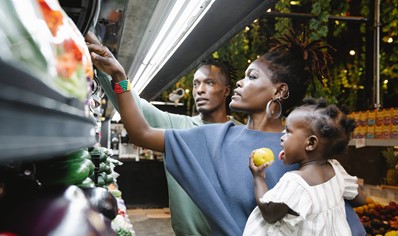
How to Prevent Type 2 Diabetes in Children and Teens
March 21, 2022
If your child or teenager is overweight, they could be at risk for developing Type 2 diabetes.
When a person has type 2 diabetes, their body does not use insulin well. That means they cannot keep their blood sugar at normal levels. Over time, too much blood sugar stays in the body.
This can cause serious problems such as:
- heart disease
- blindness
- kidney disease
Type 2 diabetes used to be called “adult-onset diabetes.” However, according to the Centers for Disease Control and Prevention, type 2 diabetes is becoming more common in children and teens.
Once a person is diagnosed, they usually have to make lifestyle changes or take medication. It can be hard to change habits!
For that reason, the best treatment is prevention—beginning in childhood and the teen years.
What are risk factors for type 2 diabetes?
Type 2 diabetes usually develops over several years. Many people do not know they have it until their doctor diagnoses it with a blood test.
Your child or teen is at higher risk for type 2 diabetes if they:
- are overweight
- do not exercise very often
- are starting puberty
- have certain genetic risk factors, such as:
- having a family member with type 2 diabetes
- being born to a mom with gestational diabetes (diabetes while pregnant)
- being African-American, Hispanic/Latino, Native American/Alaska Native, Asian American or Pacific Islander
How being overweight can lead to type 2 diabetes
Your body makes insulin, a hormone, in your pancreas. You need insulin to move blood sugar into your cells.
If your cells start to “resist” insulin, your pancreas will make more and more of it to catch up.
People who are overweight are more likely to have cells that resist insulin. This is especially true for people with extra fat in their abdomen, or “belly fat.”
If your child is overweight and starting puberty, their risk of type 2 diabetes increases. That’s because the hormones their bodies produce for puberty make it harder to use insulin—especially for girls.
Insulin resistance is a major risk factor for type 2 diabetes.
A healthy diet can help prevent diabetes. Use the MyPlate guidelines to make sure you're eating the right portions of certain foods.
What are signs of insulin resistance?
You might not know that you or your children have insulin resistance. If not diagnosed, the condition can worsen slowly over years.
However, sometimes people notice clues that their body is not using insulin correctly and that their blood sugar is too high.
Symptoms of high blood sugar include:
- patches of thickened, dark, velvety skin called “acanthosis nigricans” on the back of the neck, armpits, or other folds and creases on the body
- being unusually thirsty or hungry
- frequent urination (peeing)
- blurry vision
- headaches
- skin infections
- slow-healing cuts and sores
How to help your family reduce risk of type 2 diabetes
Childhood routines can last long into adulthood. It’s much easier to start with good exercise habits early in life than to make big changes later.
Here are a few ways to help your child avoid type 2 diabetes:
Encourage physical activity—exercise helps growing bodies to use insulin better, decreasing the risk of insulin resistance. Physical activity also helps children and teens to burn calories and keep weight to healthy levels. Click here for more ideas on how to get and stay active. Your child can also make a plan to track their activity every day.
Make healthful eating a habit—this includes serving fruits, vegetables, and water instead of sugary treats and drinks. Try to eat most meals at the table, as a family. Use smaller serving sizes and practice eating slowly. Small habits add up over time!
Limit TV and other screen time—children who sit for hours in front of TV shows or video games do not get the exercise they need. Set a limit for screen time. Your children and teens will probably resist—but they might thank you in the future.
Join the Step-Up Challenge!
Keep going forward on the path to physical fitness. Track your steps as a family and meet the daily walking goals for three weeks to win the Step-Up Challenge.
Earn $30 in Parkland Rewards for successfully completing the challenge.
You’ll also receive a FREE pedometer when you sign up for the Step-Up Challenge.



